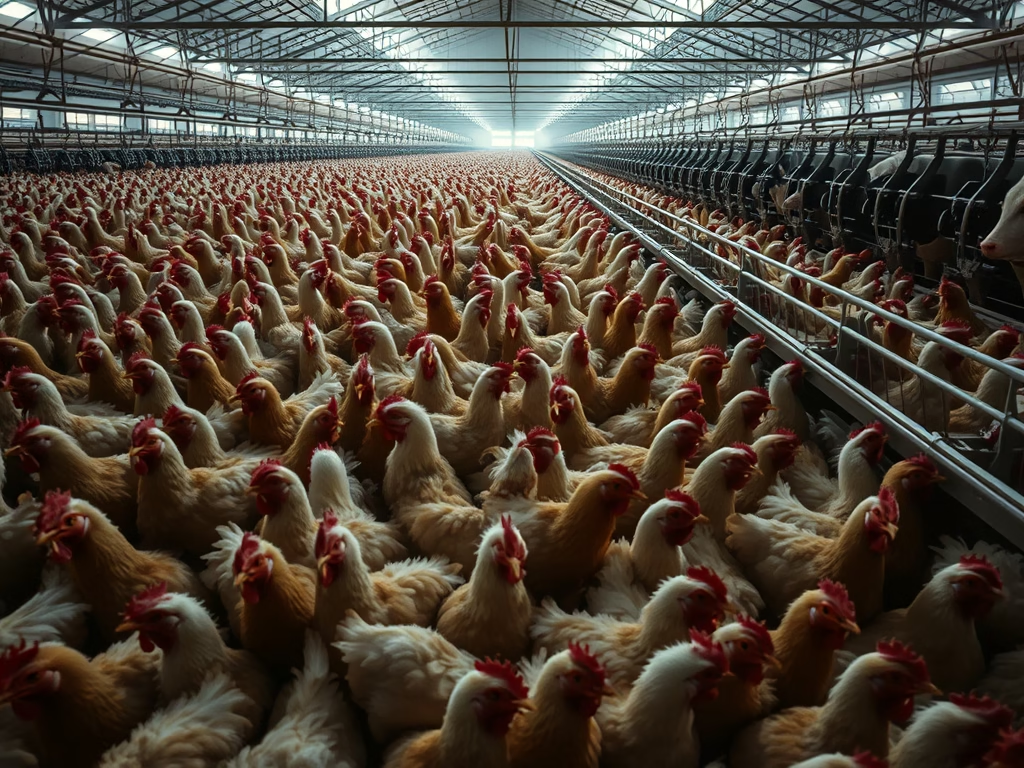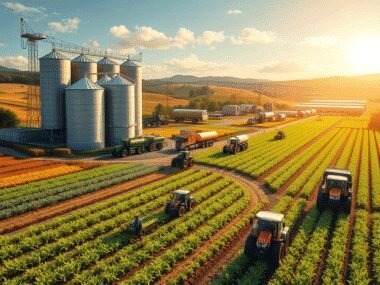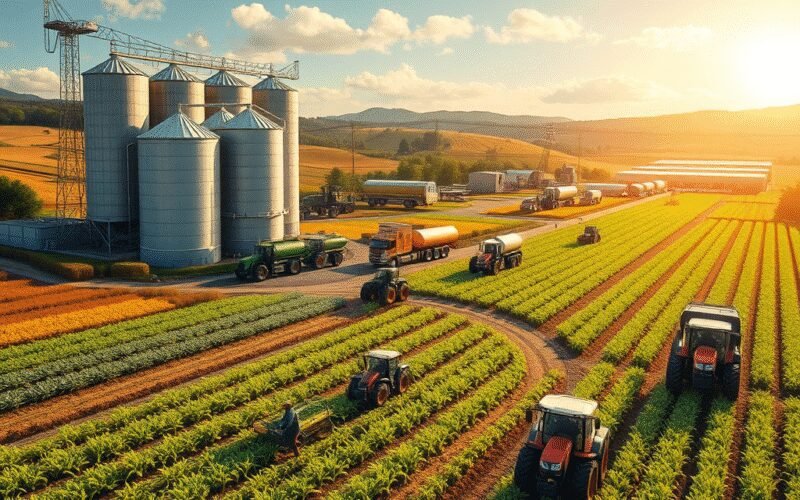Discover the fascinating journey of food from farm to fork in our exploration of the agricultural supply chain. Learn about its stages, key players, challenges, and innovative solutions shaping the future of food security.
Understanding the Agricultural Supply Chain: From Farm to Fork
Have you ever wondered how the food on your plate gets there? The journey from a seed planted in the soil to a meal on your table involves a fascinating and complex process known as the agricultural supply chain. This system is the backbone of global food security, connecting farmers, processors, distributors, and consumers in a web of activities that ensures agricultural products reach us every day.
In this article, we’ll dive deep into what the agricultural supply chain is, explore its stages, key players, challenges, and opportunities, and look ahead to its future—all while delivering a fresh perspective on this vital industry.
What Is the Agricultural Supply Chain?
At its core, the agricultural supply chain is the sequence of steps and processes involved in producing, processing, distributing, and delivering agricultural products to consumers. It’s not just about food like fruits, vegetables, grains, or meat—it also includes non-food items like cotton, biofuels, and timber. Think of it as a relay race: each participant, from the farmer to the retailer, must pass the baton smoothly to get the product to the finish line—your hands—without dropping it.
This supply chain isn’t a simple straight line. It’s a dynamic network influenced by technology, consumer preferences, government policies, and global trade. With the world’s population expected to hit 9.7 billion by 2050, according to the United Nations, the efficiency and sustainability of this system are more critical than ever.
Stages of the Agricultural Supply Chain
Let’s break down the agricultural supply chain into its key stages:
1. Production
The journey starts on the farm. Farmers plant crops or raise livestock, relying on inputs like seeds, fertilizers, water, and machinery. Today, farming isn’t just about traditional methods—innovations like precision agriculture use GPS-guided tractors and IoT sensors to monitor soil and weather conditions, boosting yields while conserving resources. Whether it’s growing tomatoes in a field or raising chickens in a barn, this stage sets the foundation.
2. Harvesting or Slaughtering
When crops ripen or livestock reaches maturity, it’s time to harvest or slaughter. Timing is everything here—picking apples too early or too late can affect quality. For livestock, humane and efficient slaughtering practices ensure the meat is safe and ready for the next step.
3. Processing
Raw products rarely go straight to consumers. Most undergo processing to improve shelf life, safety, or value. This could mean washing and sorting vegetables, milling wheat into flour, or turning milk into cheese. Some products, like wine from grapes, involve intricate transformation, adding value along the way.
4. Distribution
Next, products hit the road—or the rails, skies, or seas. Distribution involves transporting goods from farms or processing plants to warehouses, distribution centers, and retailers. For perishable items like strawberries, cold chain logistics (refrigerated trucks and storage) are essential to prevent spoilage. Grains, on the other hand, might sit in silos for months before moving on.
5. Retail and Consumption
Finally, products reach us through supermarkets, farmers’ markets, restaurants, or even direct farm sales. Consumer demand shapes this stage—think of the rise in organic foods or locally sourced produce. Your choice to buy a fair-trade coffee or a plant-based burger ripples back through the supply chain, influencing how it operates.
Key Players in the Agricultural Supply Chain
The agricultural supply chain is a team effort. Here are the main players:
- Farmers: The producers who grow crops or raise animals.
- Processors: Companies that transform raw goods into finished products.
- Distributors: Logistics experts who store and transport goods.
- Retailers: Stores and markets that sell to consumers.
- Consumers: You and me, driving demand with our preferences.
- Government Agencies: Set rules, provide subsidies, and ensure safety.
- Technology Providers: Innovators offering tools like drones or blockchain.
Each player is a link in the chain, and a weak link—like poor transportation infrastructure—can disrupt the whole system.
Challenges Facing Agricultural Supply Chains
Despite its importance, the agricultural supply chain faces significant hurdles:
- Perishability and Food Waste: The Food and Agriculture Organization (FAO) estimates that one-third of food produced globally—about 1.3 billion tons—is lost or wasted annually, often due to delays or poor storage.
- Climate Change: Droughts, floods, and shifting weather patterns threaten crop yields and livestock health.
- Market Volatility: Prices for commodities like coffee or wheat can swing wildly, affecting farmers’ livelihoods.
- Infrastructure Gaps: In developing regions, lack of roads, cold storage, or electricity leads to high losses.
- Food Safety: Contamination risks, like E. coli outbreaks, demand strict quality controls.
These challenges highlight the need for resilience and adaptability in the system.
Opportunities and Innovations
The good news? Innovation is transforming the agricultural supply chain. Here’s how:
- Precision Agriculture: Sensors and data analytics optimize water and fertilizer use, reducing waste.
- Blockchain: Tracks products from farm to store, ensuring transparency—like knowing exactly where your avocado came from.
- E-commerce: Farmers sell directly to consumers online, cutting out middlemen and boosting profits.
- Sustainable Practices: Organic farming and renewable energy lower the environmental footprint.
- Vertical Farming: Growing crops indoors in cities shortens supply chains and saves space.
These advancements promise a more efficient, transparent, and eco-friendly future.
Real-World Examples
Success Story: The Netherlands
Known for its high-tech farming, the Netherlands uses advanced greenhouses to grow vegetables year-round. These facilities, paired with efficient logistics, make the country a top exporter despite its small size.
Challenge: Smallholder Farmers in India
In India, millions of small farmers struggle with limited access to markets. Poor roads and lack of cold storage mean up to 40% of fruits and vegetables spoil before reaching consumers, according to the FAO. Solutions like mobile apps connecting farmers to buyers are starting to help.
The Future of Agricultural Supply Chains
What lies ahead? As urbanization grows and climate pressures mount, the supply chain must evolve. Artificial intelligence could predict demand, while robotics might harvest crops. The COVID-19 pandemic exposed vulnerabilities—like labor shortages and transport delays—pushing the need for resilient systems. Trends like plant-based diets or lab-grown meat could also reshape production and distribution.
Collaboration will be key. Farmers, businesses, governments, and consumers must work together to build a supply chain that’s not just efficient but also fair and sustainable.
Conclusion
The agricultural supply chain is more than a process—it’s a lifeline that feeds the world. From the farmer planting seeds to the retailer stocking shelves, every step matters. Yet, it’s a system under strain, balancing the demands of a growing population with the realities of a changing planet. By embracing innovation and making mindful choices as consumers, we can help shape a future where this chain is stronger, greener, and more equitable. So, next time you bite into an apple or sip your coffee, take a moment to appreciate the incredible journey it took to reach you—and the potential it holds for a better tomorrow.












Leave a Reply